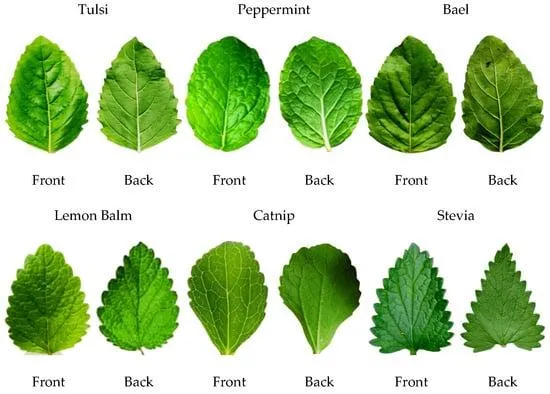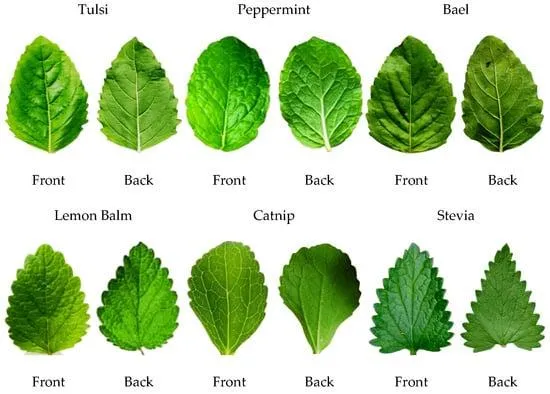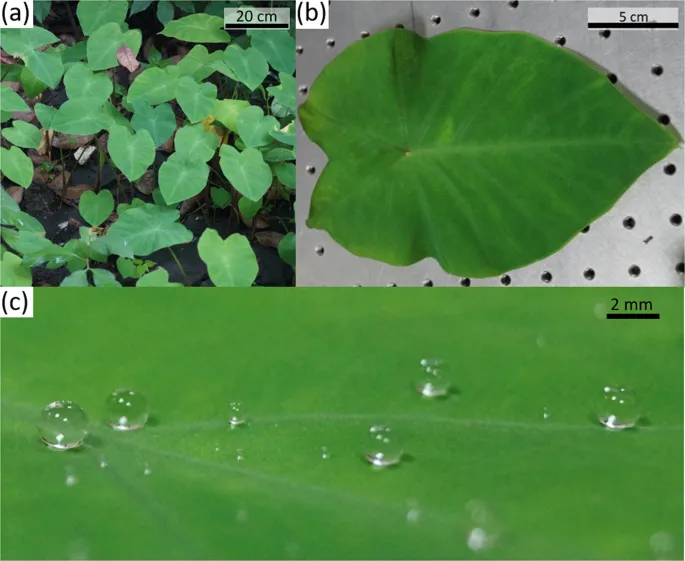All You Need to Know About Plants With Soft, Fuzzy Leaves
If you’re interested in plants with leaves that feel like felt, you’ve come to the right place. In this article, I’ll cover several popular varieties with soft foliage and answer common questions people have about caring for and growing these unique plants.
Common Felt-Leafed Plants
- Lamb’s ear (Stachys byzantina) – With its velvety gray-green leaves, lamb’s ear is one of the softest, fuzziest plants you can find. Its foliage feels almost like sheep’s wool. Lamb’s ear grows well in sun or partial shade.
- Purple velvet plant (Gynura aurantiaca) – As the name implies, this plant has beautifully colored purple leaves that look and feel like velvet. It thrives in bright, indirect light.
- Coleus (Plectranthus scutellarioides) – Coleus comes in a rainbow of leaf colors and patterns, and many varieties have leaves with a soft, fuzzy texture. It likes sun or shade.
- Catnip (Nepeta cataria) – In addition to attracting cats, catnip has gray-green leaves that feel downy to the touch. Full sun is best for catnip.
From my experience as an avid gardener, these are some of the most commonly grown felt-leaf varieties. But there are other options too if you want to experiment.
Caring for Felt-Leaf Plants
Now that you know some good plant choices, here are some tips for caring for them based on my years of trial and error:
- Water when the top inch of soil is dry. Felt-leaf plants don’t like soggy soil.
- Fertilize every few weeks in spring and summer with a balanced water-soluble plant food.
- Prune off any dead or diseased foliage regularly to promote new growth.
- Propagate by stem cuttings in spring or division in fall when the plant dies back.
- Bring potted plants indoors before first frost and provide bright, indirect light.
- Repot in spring if roots are crowded, using a pot one size larger with new potting soil.
- Protect from harsh winds and direct sun, which can scorch fuzzy leaves.
The key is giving felt-leaf plants the right growing conditions and routine care. With a little TLC, they’ll reward you with their unique soft foliage all season.

Dealing with Pests and Problems
No plant is completely bug-proof, so you may encounter some issues with felt-leaf varieties from time to time. Here are a few common problems and solutions based on my gardening mishaps:
- Mealybugs – Cottony white bugs that suck plant juices. Squish with fingers or use neem oil spray.
- Aphids – Tiny green or black soft-bodied insects. Knock off with strong water spray or use insecticidal soap.
- Powdery mildew – White fuzzy spots on leaves caused by fungus. Prune off affected parts and improve air circulation.
- Leaf miners – Fly larvae that burrow inside leaves, leaving white tunnels. No cure, just remove damaged foliage.
- Caterpillars – Handpick these voracious eaters or use Bt spray made from bacteria.
- Underwatering or overwatering – Resulting in brown leaf edges or rot. Adjust watering as needed.
The key is monitoring plants closely and addressing issues early. Preventive measures like spraying neem oil on a schedule can also help ward off minor pests. With some minor TLC you can keep felt-leaf plants pest-free and looking their soft, fuzzy best!
Where to Plant Felt-Leafs
Now that you’re equipped on plant and care basics, here are some suggestions on where toLocate felt-leaf varieties based on my plantings around the yard:
- Borders/Foundation Plantings – Use as edging or massed planting. Felt-foliage stands out.
- Containers – Keep pots of lamb’s ear, coleusn etc on the patio. Great for color and texture.
- Mixed Plantings – Add interest by teaming with hostas, fernsn anderen perennials.
- Groundcover – Lowgrowing lamb’s ear spreads well, needing little care.
- Herb Garden – Catnip’s soft leaves add to the sensory experience.
- Rock Gardens – Theirtexture provides a unique design element for rock borders.
- Windowboxes/Hanging Baskets – Coleus and others work nicely indoors or out.
Do what works best for your space! But rest assured felt-leaf plants will make a unique statement wherever you put them.

Final Thoughts
In conclusion, if you’re looking for plants that not only look beautiful but also feel amazing soft like felt, I hope this guide has given you some great options to consider. Lamb’s ear, coleus, purple velvet plant and others are very low maintenance once established. With a little care, you can enjoy their unique textures all season. Let me know if you have any other questions! Happy planting and feel free to share photos of your felt-leaf beauties.
Plants With Felt-Like Leaves
| Plant | Leaf Texture | Leaf Color | Care Requirements |
|---|---|---|---|
| Lamb’s ear | Soft, fuzzy | Gray-green | Low light, moderate water |
| Germanaster | Velvety, woolly | Pink, purple, blue | Full sun, well-draining soil |
| Silver mullein | Felt-like, soft hairs | Gray-green | Low water, hardy plant |
| Society garlic | Soft, fuzzy hairs | Gray-green | Partial sun, tolerates drought |
| Crowdust plant | Fuzzy, woolly hairs | Silvery-green | Low water, thrives in containers |
FAQ
-
What plants have kinda felt-like leaves?
Plants that seem to have soft or furry leaves comprise basically some ferns and hostas. For example, rabbit’s foot fern leaves feel sorta fuzzy. A rabbit’s foot fern leaf truly seems fuzzy to the touch due to tiny hairs on its surface.
-
Why do those plants have felt-like leaves?
Scientists think those plant leaves evolved to be fuzzy or soft-feeling possibly as a defense mechanism against loss of water. The tiny hairs potentially help absorb humidity from the air and prevent water from quickly evaporating off the leaf during dry times. At the same time, some leaf fuzz may offer protection from too much sun exposure. On the other hand, the fuzzy leaves can also help camouflage the plant or deter animals from munching on them.
-
How do you care for a plant with fuzzy leaves?
Caring for fuzzy-leaf plants basically means handling them gently so you don’t rub off the delicate hairs. When watering, mist the leaves instead of soaking them. Gently dust leaves weekly with a soft brush or cloth to remove collected dirt or bugs. during summer, place them partly in shade since the fuzzy layer means more heat gets trapped. Overall, fuzzy-leaf plants generally need the same care as other houseplants – moist soil, moderate light and occasional fertilizer.

-
Do fuzzy leaves feel the same to people?
Interestingly, leaf fuzziness may feel different to different people. Some leaves feel softer or more velvety to the touch, while others just seem slightly fuzzy. It kinda depends on the textures a person is used to feeling with their skin. Maybe because skin sensitivity varies, what’s quite soft to one person could feel rougher or barely fuzzy to someone else. Also, leaves may feel more or less fuzzy depending on moisture – dry fuzz lies flatter. Who knows, people from different cultures could view leaf fuzz totally differently!
-
Can fuzzy leaves serve any purpose besides looks?
It appears fuzzy leaves might serve uses beyond just decorative purposes. For one, fuzzy leaves likely help retain moisture better by trapping a thin layer of humid air close to the surface. Some ecologists suggest leaf hairs could also offer some protection from sunburn or sap-sucking insects. Perhaps fuzzy textures help camouflage vulnerable new growth too. On the other hand, furry leaves may pose no benefit at all. Are fuzzy covers on plants just nature’s way of adding visual interest to a garden? I’m no botanist, so what do the experts say?
-
Is a fuzzy leaf better or worse than a regular leaf?
Whether a fuzzy or regular leaf is “better” might depend on your goals. For the plant’s sake, a fuzzy coating may aid water retention and sun protection in dry/sunny regions. Nevertheless, some gardeners view fuzzy textures as unsightly or messy compared to smooth leaves. Interestingly, scientists have yet to prove fuzzy perks outweigh costs for most species. Basically, both leaf types seem evolved by nature. Though fuzzy leaves feel softer, plants don’t actually experience touch like us. Perhaps leaf fuzz offers advantages in certain conditions, but its full purpose remains mysterious. There’s no right or wrong – variety makes the plant world more stunning!
-
Should I grow a plant just because it has fuzzy leaves?
While fuzzy leaves do add a neat tactile element to gardening, that feature alone may not be reason enough to pick a particular plant. You’ll want to consider growing conditions, mature size, color, and whether the plant has any amazing horticultural traits beyond fuzzy textures. Fuzzy-leaf plants often need special care too – like reduced light and damp soil. So check if a furry species matches your space and abilities before impulse buying. Unless you dig houseplants mainly for their odd or quirky features, choose based on function over just a gimmick. With some research, I’m sure you can find versatile fuzzy-leaf beauties that complement your style!

